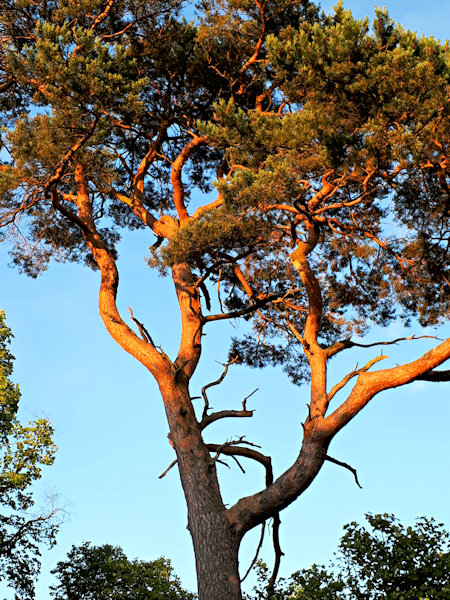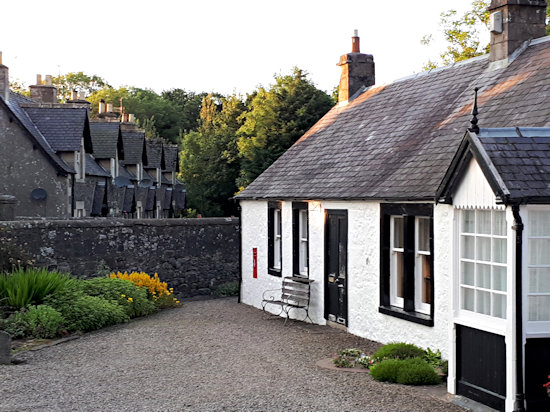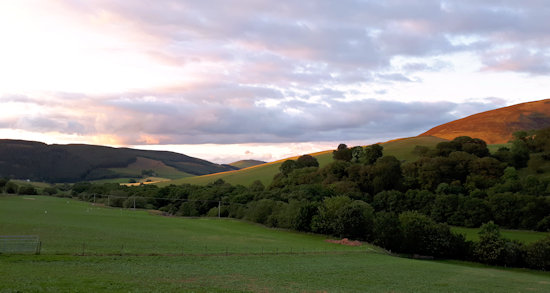On how easy or hard it is “getting into” the Lymond Chronicles
(Unlike most of the posts here this one avoids spoilers apart from a few very early quotes and a very general hint about the hero, so is safe for anyone just starting their Dunnett reading experience.)
With many more people turning to books to help them get through the coronavirus lockdown, we’re seeing plenty of new readers for Dorothy’s first series and many are turning up on my Twitter timeline. Some of them have clearly become entranced immediately, but inevitably a few are finding things harder. This has revived discussion of the old question (no, not that one!) of how easy or difficult it is to get comfortable with Game of Kings and our prickly hero, and how far readers should persist with it if they’re finding it difficult.
For instance in a thread earlier today, Dunnettcentral joined the discussion with
People often say they find Game of Kings hard to get into. (Two in my own family) This baffles me, as I adored it from the start. No, I didn’t understand a lot of it, but I didn’t care, I was enthralled.
to which long-time reader Grandma Ogre responded
I was 14. I’d never read anyone who could make English weep, sing, stab – and fly! like that. Understand it, nope; I just wanted to stand under it and experience it.
If only everyone was so fortunate. I’ve said before that I had none of those problems, but it doesn’t baffle me that many people do as I was aware very quickly that I was in a very privileged position. I was about to respond on the thread but realised that it would require multiple posts, so I decided to turn it into a blog post instead.
Ooooh, what a lucky man he was
Firstly I’d met Dorothy already, albeit very briefly at that point, and had already twigged that there was a mischievous and lively intelligence behind her disarming smile. So I was almost expecting misdirection, and was certainly not disappointed there! Most new readers, unless forwarned by friends, have no such suspicion that she’ll be working in deep and multiple layers of complexity; that the characters we’ll meet will have heavily biased opinions and will have been given evidence that’s wildly innaccurate in a way that makes our modern “fake news” seem perfectly straightforward by comparison; and that, unlike almost every other author most of them have ever read, she’ll never show you anything from the main protagonist’s viewpoint! (until book 6).
The opening sequences looking up from the Nor Loch were of course a scene I knew well and that was a second advantage – I’m an Edinburgh lad born and bred and with a keen interest in its history and knew the layout and landscape intimately – so I could envisage the scenes without even thinking about them and thus had more room to appreciate the quality of the descriptions, which even at this early stage are wonderfully composed. The language was also immediately accessible to me – not just the Scots words and speech patterns but there was something Scottish in the cadence and rhythm of it that was immediately familiar and comfortable; and again the average reader – particularly those from outside the UK – wouldn’t have that. In contrast they would need to try to assimilate all this while trying to work out who the characters were, what relation they have to the story, get some sort of grasp on the basic history, and assess the character of the man whose name suggests he is the focus of the series.
Knowing me knowing you – Aha!
And I had a third advantage which many don’t have – a mind brought up on the complexities of chess and the mysteries of Sherlock Holmes. It soon became apparent that Dorothy had a mind ideally suited to puzzles and intricacies, multilayered and full of false trails and red herrings. While I couldn’t possibly match her on the literary allusions or the foreign languages, I at least had the sort of thinking processes that would allow me to follow the devious plot twists and perhaps more importantly to work out what were the the important structural elements in the story while temporarily laying aside some of the aspects (like Latin or Middle French poetry and quotations) that I didn’t immediately understand until I could follow them up – not allowing them to be a distraction from the crucial ones.
Even then, I recall very well that there was a point fairly early on in my first read where I saw a reference to something that had been said earlier and stopped dead in my tracks. I remember thinking to myself that I wasn’t paying enough attention, wasn’t concentrating enough despite being a slow and deep reader. That this author had to be watched ultra-carefully for connections that could be oh-so-easily missed as they were dropped casually into the dialogue or hidden amongst a passing description. That this book deserved the levels of intense concentration I had once given to match-play chess. And so I went back and re-read from the start until I was sure that I had settled into a sufficiently immersed reading method. I have to wonder if a speed reader would have any chance at all of understanding what is going on! And how that might affect their ability to be captured by the story.
And one must acknowledge that on top of all these aspects there is a further problem for new readers. Dorothy was writing her first novel, never knowing whether it would ever be published, and there is an undeniable feeling of her throwing in everything including the kitchen sink! The language is a little flowery in places, the quotes that flow from Lymond’s lips in multiple tongues can be a little overpowering, and that’s without even considering the impossibly complex politics. I could easily see some readers finding it all a bit too much.
Got a feeling inside (Can’t explain)
How easy it would be to throw up your hands in desperation – who are all these characters, who all seem to have multiple names? How are we supposed to like this scum-bag of a character? He’s set fire to his mother’s home, robbed her neighbours, even thrown a knife at one of them! He verbally rips his own men to shreds, confuses and confounds a potential disciple, and makes him fire an arrow at one of those men. He flirts with his brother’s wife, insults the man himself and generally acts like a criminal and traitor. Who is the hero? Is there a hero or is he going to turn out to be a Flashman scoundrel? When is anyone going to explain anything?
Why was I so sure that it all would come out in the end? So certain that Lymond would turn out ot be on the side of the angels. Well part of it is that Scottishness I mentioned earlier – we’re never simple and straightforward, always underdogs, always doing gloriously daft things for the right reasons but against all caution and advice, and seldom getting the rewards… except maybe in fiction.
Caledonia’s been everything I’ve ever had
There’s one further influence that I had that maybe helped/swayed me a little in a positive direction, and which few other readers would have. I had grown up reading The Scotsman, and that newspaper had been turned into a leading and respected national institution by one man – Alastair Dunnett, Dorothy’s husband. Although I was still a young man when he switched from being the Scotsman editor to his later role as Chairman of Thomson North Sea Oil, his influence permeated the paper for many years afterwards and I had read many of his editorials (does anyone read editorials now?) and later occasional articles. For many years my writing style was largely based on his.
He was universally respected – I once saw him described in the Scots Magazine as “a man of total integrity”. He was devoted to Scotland despite many lucrative offers to take him elsewhere. He’d been offered the editorship of The Times when it was a position of immense importance and political influence. It was impossible to imagine that Dorothy would write a principal character who would turn out to be a knave, when she had his example and reputation behind her. I doubt I consciously thought about it at the time but the subconscious idea will certainly have been lurking there.
Carry on my wayward son (or daughter)
So for those of you who might be struggling in Game of Kings or who have previously tried and given up – I have considerable sympathy for your confusion and frustration. You probably have none of these advantages that I did.
But please don’t give up!
Read to at least 100 pages, by which point you may well start to change your mind. You’ll meet a character who makes you reassess every problem you’ve had with story and characters so far, and crucially shows you something more of the author’s wicked sense of humour.
Now I can’t guarantee that if you get that far that you’ll fall in love the way I and many thousands of readers have – not everyone likes Dunnett any more than everyone likes Beethoven – but if you’re drawn to this type of writing at all then it is very, very likely. And like many of us it could literally change your life and give you interests it topics and places and cultures that will enrich your life in ways you can’t yet imagine. Even just in the purely literary sense you’ll find a skill in the use of language that will give you lifelong pleasure. Grandma Ogre’s description is absolutely spot on – Dorothy “could make English weep, sing, stab – and fly!” She can teach you to understand, to observe and describe, to delight in the interplay of words and concepts in a way that few other authors even approach. These books are worth the effort a thousand times over!
That opening line (sorry, ran out of song titles)
For the folks who were immediately entranced I disagree on only one single thing. I hear many who say that they were hooked by the opening phrase “Lymond is back”. I wasn’t. It was an ok opening but it didn’t grab me; and compared to some of the other quite brilliant opening lines she would come up with later it pales into the merely good. For me it was a gradual increasing admiration through the first chapter, where we had progressively:
“Across four hundred feet of black lake, friezelike on their ridge, towered the houses of Edinburgh. Tonight the Castle on its pinnacle was fully lit, laying constellations on the water…”
“…oriflamme…”
“”I,” said Lymond, in the voice unmistakably his which honeyed his most lethal thoughts, “am a narwhal looking for my virgin. I have sucked up the sea like Charybdis and failing other entertainment will spew it three times daily, for a fee.”
“The sow approached her water dish, sniffed it with increasing favour, and inserted both her nose and her front trotters therein.”
followed not long after by the delightful follow-up
“She bounced once off the newel post, scrabbled once on the flags, trotters smoking, then shot Mungo Tennant backward, squealing thickly in a liberated passion of ham-handed adoration.”
By “trotters smoking” I was certain – this was unlike anything I’d ever read. And every chapter from then on confirmed it.
I’ve never for a second regretted becoming so immersed in these books – if you’re having problems with them do give them enough time to work their magic on you.
(no song titles or lyrics were harmed in the making of these headings, but maybe I’m going just a bit stir-crazy like everyone else in this lockdown – stay safe everyone.)














